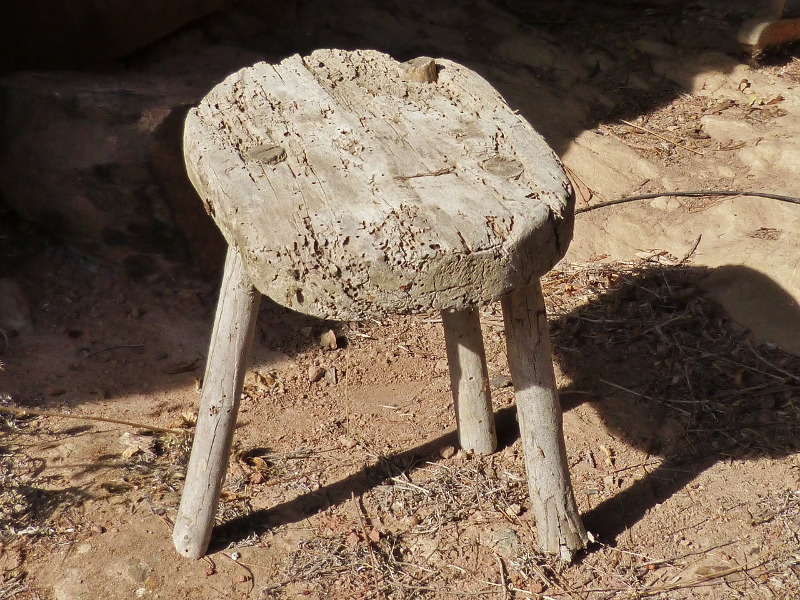MadeinFusina


Lo sgabello 60 di Alvar Aalto Restando in Italia, hanno fatto la storia del design anche le creazioni del 1957 dei fratelli Achille e Pier Giacomo Castiglioni, abili nel reintepretare con ironia oggetti d’uso quotidiano: per lo sgabello Mezzadro Zanotta rielaborarono il sedile di un vecchio trattore agricolo verniciato, invertendo l’orientamento della balestra che lo sosteneva.

Lo sgabello Mezzadro Zanotta dei fratelli Castiglioni Ancora più originale, poi, quello conosciuto come “sgabello per telefono” o Sella, realizzato fissando una vera sella da bicicletta da corsa in cuoio a un’asta verticale.

Lo sgabello Sella dei fratelli Castiglioni


Dall’Egitto fino ai giorni nostri, la storia dello sgabello è quella di un oggetto dalle mille forme e significati. Fusina lo fa diventare anche strumento di comunicazione per i brand di abbigliamento e accessori per lo sport
From the Egypt to the present days, the history of stools is rich in forms and meanings. Fusina turns them in effective brand communicators for sport wear and accessories.
From being the chair’s “younger brother”, humble tool used during the milking, to a design object and brand communicator: the stool is probably the piece that, in furniture design, transformed the most, always preserving its basic features of seat, table, stand. Thanks to its great versatility, it soon attracted designers and producers, becoming an extremely important piece of design furniture both for houses and public spaces.
A story that stretches from the Ancient Egypt
The story of the stool has distant roots. Many evidences tell us that the stool was used even in the ancient Egypt. In that time, its shapes and functions were varied: it represented the authority and prestige of the deceased sat on it in the sculptures or it simply was the support on which humble artisans sat during their hard work. One of the elements that reflect the stool’s evolution the most in this historical period are the legs. Three or four, ending in bull’s hooves at the beginning, later evolved in lion’s paws and, sometimes, even in long goosenecks with beak. During the Roman Empire, the lion’s paw legs were sometimes replaced with female figures.
At the French Sun King Louis XIV’s royal court, during the seventieth Century, shapes and models were of great importance in representing differences in identity and personal privileges, and had to respect a rigid etiquette. At Versailles, the Duques’ wives and the other ladies of the court used to seat on the pliant, a simple folding stool with a “double x” leg structure. The short and padded seat stool, the tabouret de grace, on the other side, was reserved exclusively for those few aristocrats who had the privilege to seat next to the monarchs.
In modern times, there was absolute freedom of choice for shapes, dimensions and materials. A classical piece, symbol of functionalism in furniture design, is the Stool 60. Designed in 1933 by the Finnish architect and designer Alvar Aalto, this stool has a basic, easily recognizable shape: the birch-wood legs, supporting a round seat, are bent into the shape of an L using a particular technique invented by Aalto together with wood carpenter Otto Korhonen.
Fusina for Sidi and Fi’zi:k
A simple, everyday object that becomes useful vehicle for communication. This is how, in Fusina, we interpreted the stool: while designing it, we were also designing a Point Of Purchase – a design object able to communicate with originality the brand or product’s identity in retail spaces.
For the Italian manufacturer of wear for motorcycling and biking Sidi, Fusina shaped an oval cylinder stool with a high-density foam seat to be placed inside the shops. On the curved sides of the stool, images back-printed on transparent pvc films can be periodically replaced with new promotional material of the brand or product.
For Fi’zi;k, bicycle components producer, our team designed and made a stool called “Paracarro” (“Bollard”) that, thanks to its shape and dimensions, recalls this typical element of the road. Our stool has a wooden rectangular base and a curved seat. It holds advertising messages and written texts that recall the imaginary of a mountain road, thus accompanying the customer outside the store and into the nature, riding his bike.
Archive MadeinFusina
May 03 2023 | MadeinFusina
The FusinaLab Bestiary
Small scenes and wunderkammer recreate a compendium of animals in colored plexiglass in the FusinaLab laboratory.
January 27 2022 | MadeinFusina
Contemporary Psychedely for retail
Daily explorations, material exercises as solicitations for the definition of unique objects of its kind. Interpretations that go beyond the schemes and that want to transfer alterations, sensory...
October 20 2020 | MadeinFusina
Registration Certificate for FusinaLab
In the process of developing and building the brand value, we inform you that the FusinaLab brand has been registered with EUIPO. FusinaLab is now registered...
April 16 2018 | MadeinFusina
The history of Plexiglas, from shiny glass to design object
When a material born by chance becomes a fundamental object of design Nowadays, Plexiglas is one of the most widespread and versatile material in circulation, used in industry, in the commercial...




